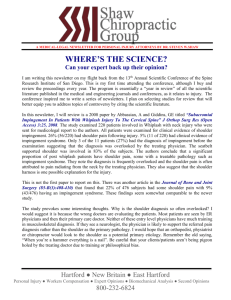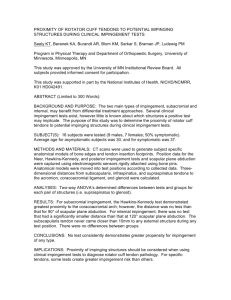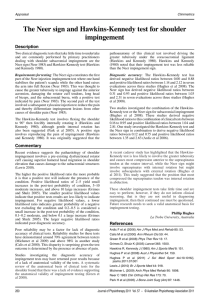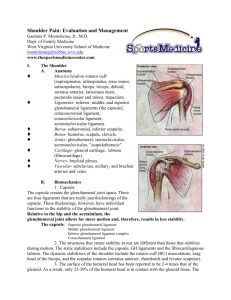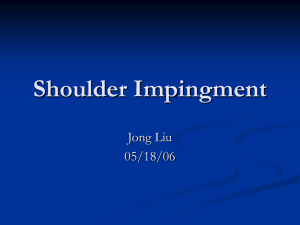Purpose of Document: - Geriatric Assessment Tool Kit
advertisement
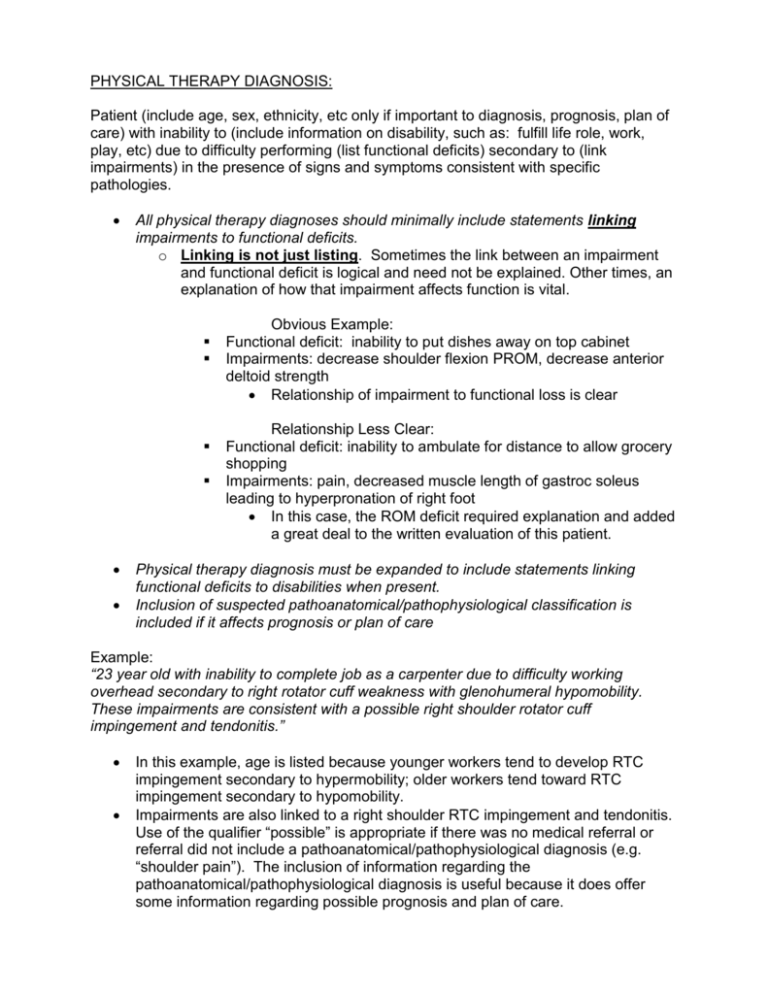
PHYSICAL THERAPY DIAGNOSIS: Patient (include age, sex, ethnicity, etc only if important to diagnosis, prognosis, plan of care) with inability to (include information on disability, such as: fulfill life role, work, play, etc) due to difficulty performing (list functional deficits) secondary to (link impairments) in the presence of signs and symptoms consistent with specific pathologies. All physical therapy diagnoses should minimally include statements linking impairments to functional deficits. o Linking is not just listing. Sometimes the link between an impairment and functional deficit is logical and need not be explained. Other times, an explanation of how that impairment affects function is vital. Obvious Example: Functional deficit: inability to put dishes away on top cabinet Impairments: decrease shoulder flexion PROM, decrease anterior deltoid strength Relationship of impairment to functional loss is clear Relationship Less Clear: Functional deficit: inability to ambulate for distance to allow grocery shopping Impairments: pain, decreased muscle length of gastroc soleus leading to hyperpronation of right foot In this case, the ROM deficit required explanation and added a great deal to the written evaluation of this patient. Physical therapy diagnosis must be expanded to include statements linking functional deficits to disabilities when present. Inclusion of suspected pathoanatomical/pathophysiological classification is included if it affects prognosis or plan of care Example: “23 year old with inability to complete job as a carpenter due to difficulty working overhead secondary to right rotator cuff weakness with glenohumeral hypomobility. These impairments are consistent with a possible right shoulder rotator cuff impingement and tendonitis.” In this example, age is listed because younger workers tend to develop RTC impingement secondary to hypermobility; older workers tend toward RTC impingement secondary to hypomobility. Impairments are also linked to a right shoulder RTC impingement and tendonitis. Use of the qualifier “possible” is appropriate if there was no medical referral or referral did not include a pathoanatomical/pathophysiological diagnosis (e.g. “shoulder pain”). The inclusion of information regarding the pathoanatomical/pathophysiological diagnosis is useful because it does offer some information regarding possible prognosis and plan of care.


